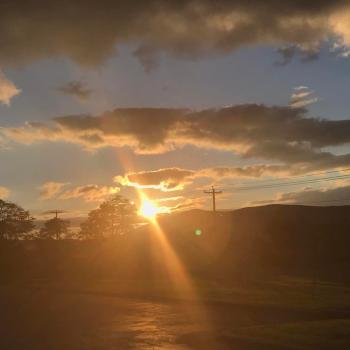Editors' Note: This article is part of a Public Square conversation on Technology and Spirituality. Read other perspectives here.
The Pagan community has changed a lot over the decades, particularly in regards to how we organize and communicate. Once, newsletters like Green Egg were the primary method of staying apprised of the goings-on in circles outside of one's own local group(s). Communication was slow and existed in only one direction; information was much more difficult to come by. The very makeup of the Pagan culture—its traditions and perspectives—has evolved with the changing environment of the modern social arena.
What the Research Says
A lot of research has been done in recent years involving the effects of "Network Culture." There are discernible trends found within the endless records of digital networks that have had a massive impact on modern culture.
One of the defining aspects of digital communications is its accessibility, versatility, and ability to be personalized. Old-style media would present you with a prescribed narrative, in a fixed format, which the reader could then choose to accept or reject. Alternatively, modern digital media is information driven, as opposed to story driven. Users have the ability to deconstruct, fact check, and determine the validity of the information they are being presented with, all from the same terminal and within minutes using research tools like Google. People want to hear about issues that interest them. They want it from sources they like, they want to be kept up to date in real time, and most of all they want to be in control of how that digital media is presented. The arrival of the Internet, social media outlets, and online news sources placed the user in control, allowing them to research as they wish.
Digital Pantheons
So what happens when the digital age hits a religious community? Most of the research here is done from a specifically Christian perspective. Lambert's Secularization of New Religious Paradigms concluded that digital communities "promote dehierarchization, personal practice, pluralism, and relativism." This was backed by the Barna Research Group a year later in a study that found that within religious communities there was a sharp decline in the number of people who believed church affiliation was important. This is within religious communities, meaning that these people were still believers (in this case mostly Christian) but felt that Church affiliation was less important than personal practice.
So what does this mean for us Pagans?
Obviously these traits were highly distressing to organized religions, but they hardly seem to troublesome to modern Paganism, right? Dehierarchization, personal practice, pluralism ... these are many of the traits that Pagans often pride themselves on! It's easy to overlook the influence of the Internet on our traditions when you try to judge those effects based on most modern practices, but it didn't always work this way. Even for those of us who weren't practicing back in the days before the digital revolution, all it takes is a simple look at our history to see how we've changed.
Most traditions in the '60s were initiation-based, with information being much more restricted. Concepts like lineage and bloodlines were highly valued, and carried a degree of authority or clout in many circles. Most covens also had a significantly longer lifespan. So what exactly changed? The 1970s and '80s brought about several new concepts and organizations. The first important shift came from authors like Raymond Buckland, who promoted the idea of self-initiation and solitary practice. Texts like the infamous Bucklands Big Blue Book encouraged the reader to form their own personal practice based on their own research. At the same time, modern Heathenry was really bursting into the scene in America with the Ásatrú Free Assembly. The AFA was heavily research focused, as a reconstruction effort. By the early '90s there was a growing notion of Paganism/Heathenry as an information-driven effort, where the individual practitioners had the power to declare their own beliefs and ideas.
So when the digital age hit the religious sphere, the various Pagan communities were already working on, and to some (debatable) degree prepared for, the coming changes. Because we were so few and far between, we latched onto this new method of interaction, and it has drastically changed our culture.
Pros and Cons
For better or worse, most parts of our community have fully integrated online resources. This brings certain strengths and weaknesses. We can communicate and mobilize nearly instantly, and have a community that often promotes self-reliance and critical thinking. However the majority of our covens/kindred/groves only last one or two years before collapsing. Perhaps we should accept this transient trait as an aspect of the community and simply integrate the idea as a strength rather than a shortcoming? Our communities are constantly changing, adapting, and growing. The one consistent trait of our community is that our ability to change has always been key to our survival.
5/7/2014 4:00:00 AM




